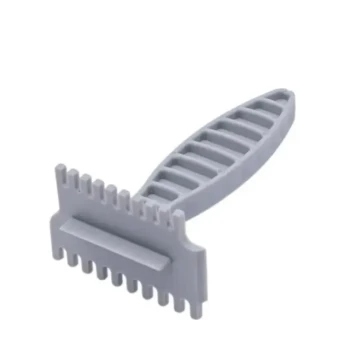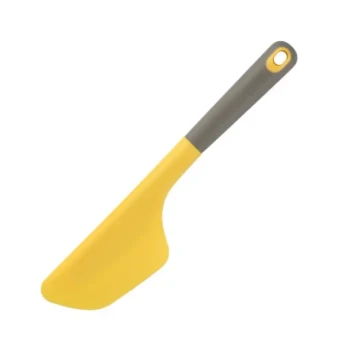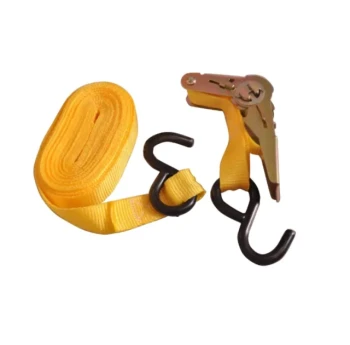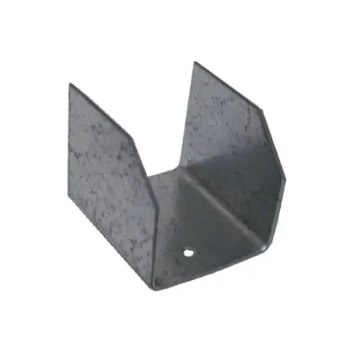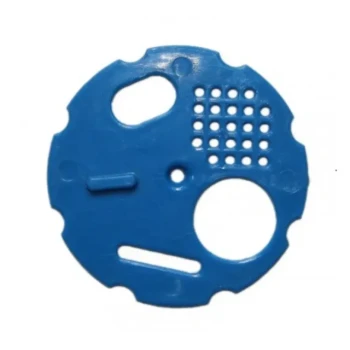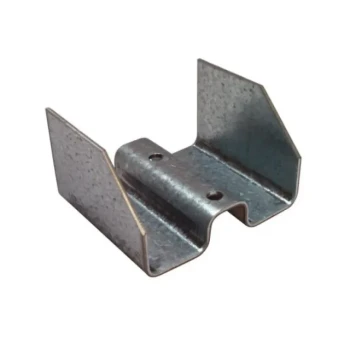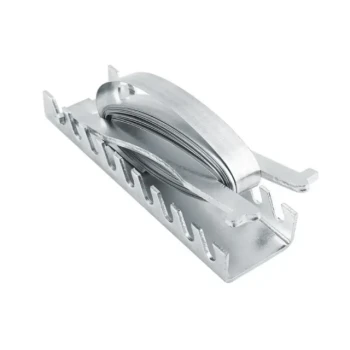The most effective way to keep mites out of your beehive is to adopt an Integrated Pest Management (IPM) strategy that combines regular monitoring with a rotation of treatments. Methods like fogging with food-grade mineral oil or dusting with powdered sugar can cause mites to fall off the bees, but they are part of a much larger management plan required to protect your colony from collapse.
Effective mite control is not a one-time event, but a continuous cycle of monitoring mite populations and intervening at the right time with the right method to keep their numbers below a deadly threshold.
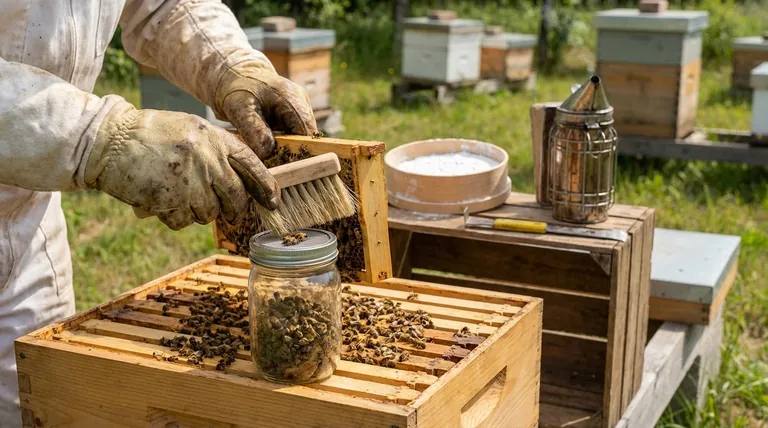
Why Mite Control is Non-Negotiable
The Real Threat: Varroa Destructor
The primary pest you are fighting is the Varroa destructor mite. These tiny external parasites are the single greatest threat to honey bee health worldwide.
Without management, a Varroa infestation will almost certainly destroy a honey bee colony within one to three years.
How Varroa Mites Kill a Hive
Mites attach to adult bees and developing brood, feeding on their fat body tissue. This weakens the bees, shortens their lifespan, and impairs their immune systems.
More importantly, Varroa mites are incredibly effective vectors for transmitting deadly viruses, such as Deformed Wing Virus (DWV). It is often these viruses, spread and amplified by the mites, that deliver the final blow to the colony.
The Foundation: Monitoring Mite Levels
You cannot manage what you do not measure. Before you treat, you must determine your hive's "mite load" to know if and when intervention is necessary.
The Powdered Sugar Roll
This method involves collecting a sample of bees (typically 300, or a 1/2 cup) in a jar, adding powdered sugar, and gently rolling the jar to dislodge the mites. The bees are then shaken out over a white surface, and the mites are counted.
This is a popular method because it is non-lethal to the bees.
The Alcohol Wash
An alcohol wash provides a more accurate count but is lethal to the sample of bees. A similar sample of bees is collected and washed in isopropyl alcohol, which causes the mites to detach completely. The mites are then strained and counted.
Many experienced beekeepers prefer this method for its accuracy, as the health of the colony outweighs the loss of a few hundred bees.
Understanding the Threshold
After counting, you calculate the number of mites per 100 bees. If this number exceeds the established treatment threshold (often 2-3 mites per 100 bees, or a 2-3% infestation rate), it is time to act.
Key Treatment Strategies
A successful plan involves using different methods at different times of the year, based on your monitoring results.
Mechanical & "Soft" Treatments
These methods are less invasive but are often not effective enough to control a serious infestation on their own. They are best used when mite counts are very low.
The powdered sugar dust and mineral oil fog, as mentioned in your references, work by making the bees slippery. This interferes with the mites' ability to hold on and stimulates the bees' natural grooming behavior, causing mites to fall through the hive's screened bottom board.
Chemical Treatments (Miticides)
When mite loads exceed the threshold, a chemical treatment is usually required. These are often referred to as "hard" treatments.
They fall into two main categories:
- Organic Acids: Products using formic acid (Formic Pro) or oxalic acid are effective and can be used in honey-producing hives (with restrictions). They are organic but can be harsh on the bees and queen if not used correctly.
- Synthetic Miticides: Products like Apivar use a synthetic chemical on a plastic strip. They are highly effective but carry a higher risk of building mite resistance if overused.
The Principle of Rotation
To prevent Varroa mites from developing resistance to a particular chemical, you must rotate your treatments.
Never use the same class of chemical treatment back-to-back. For example, if you use a synthetic miticide one year, switch to an organic acid the next. This simple practice is critical for long-term, sustainable mite control.
Understanding the Trade-offs
There is no single "best" solution for mite control; each approach has benefits and drawbacks.
"Soft" Treatments: Low Impact, Low Efficacy
Methods like sugar dusting are gentle on the bees and don't introduce chemicals into the hive. However, their efficacy is often low (less than 40% mite drop) and they are not a reliable solution for a moderate or high infestation.
Chemical Treatments: High Efficacy, Higher Risk
Miticides are your most powerful tool for knocking down high mite populations. However, they can stress the colony, potentially harm the queen, and have strict temperature and timing requirements for safe application. Misuse can be more damaging than helpful.
The Danger of Inaction
The greatest pitfall is failing to monitor or treat at all. Assuming your bees are "mite-free" without checking is a gamble that almost always ends in a dead colony. Consistent vigilance is not optional.
Building Your Annual Mite Management Plan
Your goal is to create a year-round calendar for monitoring and treating based on the seasons and your hive's specific needs.
- If your primary focus is prevention with low mite counts: Rely on frequent monitoring (at least 4 times per year) and be prepared to use a "soft" treatment or an organic acid if counts begin to rise.
- If your mite counts are approaching the danger threshold: Act decisively with a proven miticide appropriate for the season, following all label instructions precisely to save the colony.
- If your primary focus is long-term hive health: Create a multi-year plan that rotates between different classes of chemical treatments to combat mite resistance.
Proactive and informed mite management is the single most important action you can take to ensure healthy, thriving bees.
Summary Table:
| Aspect of Mite Control | Key Action | Why It's Important |
|---|---|---|
| Monitoring | Perform regular sugar rolls or alcohol washes. | You can't manage what you don't measure. Essential for knowing when to treat. |
| Treatment Threshold | Act when mites exceed 2-3 per 100 bees. | Prevents colony collapse by intervening before virus transmission becomes critical. |
| Treatment Types | Rotate between soft methods (sugar dusting) and chemical miticides. | Prevents mite resistance; soft methods for low counts, chemicals for high infestations. |
| Long-Term Strategy | Create an annual calendar for monitoring and treatment rotation. | Ensures sustainable, proactive hive health management year-round. |
Protect Your Apiary with Professional-Grade Equipment
Managing Varroa mites is a constant battle that requires the right tools. HONESTBEE supplies commercial apiaries and beekeeping equipment distributors with the durable, reliable supplies needed to implement effective IPM strategies. From monitoring kits to treatment applicators, our wholesale-focused operations ensure you have access to the best equipment for maintaining healthy, productive colonies.
Let's strengthen your beekeeping operation. Contact our team today to discuss your wholesale needs.
Visual Guide
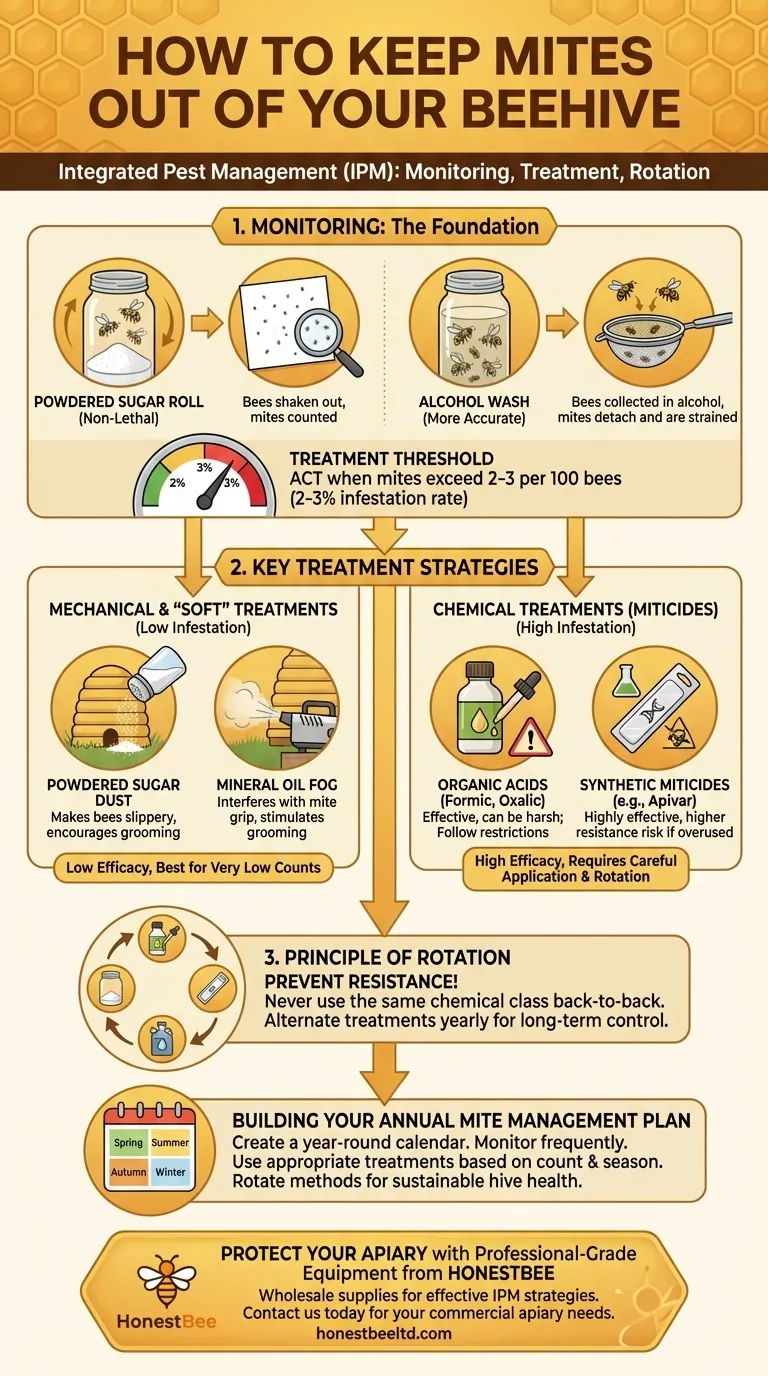
Related Products
- Langstroth Screen Bottom Board for Beekeeping Wholesale
- Professional Galvanized Hive Strap with Secure Locking Buckle for Beekeeping
- Retractable Chinese Queen Rearing Grafting Tools Equipment
- Lightweight Durable Plastic Queen Excluder Scraper for Beekeeping
- Endless Loop Ratchet Hive Strap
People Also Ask
- How does a screened bottom board assist with temperature control and pest management? A Key Tool for Modern Beekeeping
- What is the primary function of a screened bottom board in a hive? Enhance Ventilation & Control Varroa Mites
- What are the benefits of using a screened bottom board for beehives? Improve Ventilation & Mite Control
- What are the benefits of a screened bottom board? Boost Hive Health & Control Varroa Mites
- What are the benefits of using a screened bottom board in warm or humid climates? Boost Hive Health & Control Pests



